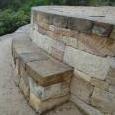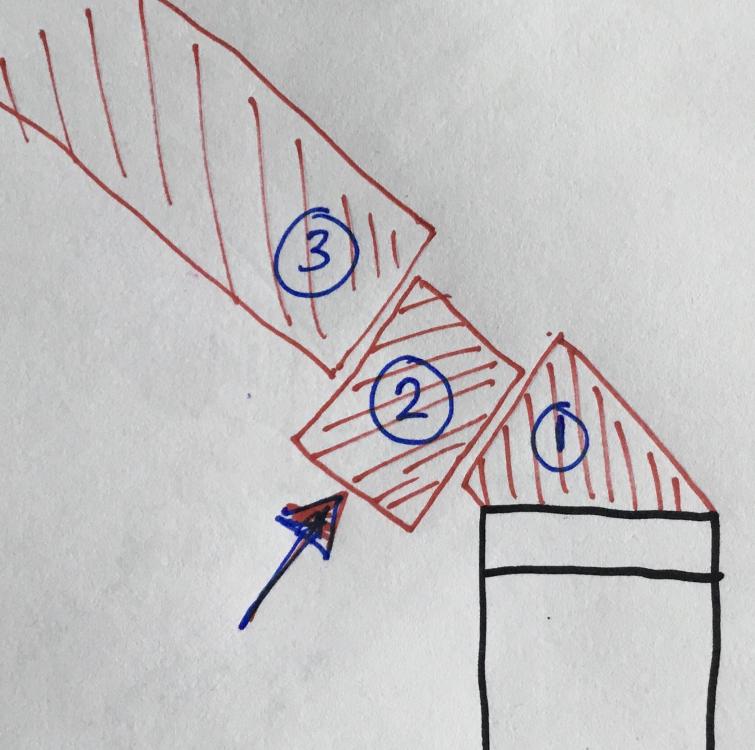Leaderboard
Popular Content
Showing content with the highest reputation on 04/08/21 in all areas
-
“Prior Approval Required and Granted”!!! Thank you all for your help and comments on this thread, which proved very helpful. Today we received the best possible outcome and are thrilled! On to the next challenge of seeing through the development, very exciting and daunting all the same!5 points
-
Perhaps.. https://www.amazon.co.uk/How-Stop-Influence-Planning-Permission/dp/0953348903 https://www.amazon.co.uk/How-Object-planning-application-appeal/dp/1912384108 Although you may know most of it. You also need to check the closing date for comments/objections. If time is short you could start by raising an objection that neighbours have not been notified as required and demand they restart the statutory consultation period. If other houses are affected I recommend you help them with their objection letters as these need to contain valid planning reasons for rejection. Most people prattle on about things that carry no weight such as loss of a view or devaluation of property. Mention things like.. Out of keeping/not in an industrial area/outside village boundary but near houses. Noisy industry inappropriate near a cemetry. Any noise complaints from their current place? Access near dangerous bends in the road? Speed limit?2 points
-
Quickish update only because I seem to have run out of hours as now we are building, balancing family life and a full time demanding job. So after the last update, where the stone wasn't really getting solid. I ended up getting it dug out, it was bothering me too much and I was completely worried about it. It was no major issue the boys dug it out in an afternoon, then put dry type 1 back in there and compacted down and built the levels up no hassles. We had a full dry week so it made a massive difference and they were able to get along much much quicker. In between the stone drama I had the surveyor on site and we set up profile boards to set out the corners and main walls internally that I needed to reference off for ducts. I set my boards up so that the string lines lined up with the lower portion of the insulated foundation once I came to the stage of setting that out. Doing it that way worked well. They built the stone up to level, then we cut all the ducts and drains in. The groundworkers took my layout for the drains, then done what they wanted to do in instead, which worked better. They didn't fancy using the rest bends but I insisted in some places. They did prefer to use Tee's which seemed fine. I wasn't too bothered by this point. The ducts ae all mm precision hoefully along with the drains so they all pop up and I spent A LOT of time planning the plant room. Then we screeded with 50mm sand. I used steel pipes for this and we set them up with the laser. It worked well and we had it screeded with 50mm sand in an afternoon. I used concrete sand for this which was wet but worked fine. That's a picture of me in the bucket of the digger doing the bits out in the middle. None of us could deal with leaving a hole in the middle. I got straight on to the DPM after this. My system has the DPM placed under the Kore insulated foundation. I did this all myself and had worked out all the joins on CAD befroe hand. It's easy to lay that way, albeit I hadn't anticipated the PITA it is to not walk on the sand but lay the DPM and then not walk on the DPM is impossible as i want it to stay level. I used OSB boards to move about most of the time. Cutting round drains is a pisser with the DPM, alsowhere you have 4 ducts popping up next to one another in a bunch it is also a complete pain. I did big cuts to get it over and it took forever to patch. I used top hats where possible and taped them in but there was some dodgy joints around where multiple ducts come up in a bunch - Those have been foamed to death now the insulation is down. Things to note - the Visqueen DPM is good, their double sided tape is good. I actually kept it in a cooler with a hot water bottle to keep it malleable as it was pretty cold when I was doing it. Their single sided tape is absolutely shit, do not buy it. Toolstation single sided DPM tape is also shit! However the Screwfix DPM tape is mega, stick like mad no matter what. really impressed with it. here: So once DPM was done I got the insulate foundation down and got started. I took some advice from @LA3222 as albeit straightforward it's not bang on. I was expecting something more highly engineered and don't get me wrong it is of high quality but some bits are a little longer and few mm here and there and some cut slightly off the square which means a good bit of adjustment. But works fine. I set out the corners first, then loosely laid it with my profile board lines. I then ended up taking a middle section out each line to get it to the right lengths and adjusted from there. I checked the lengths and squareness and procrastinated about it, ovethought it and all sorts, I didn't trust my tape as I could stretch it however much i wanted. I then ended up moving it all about and doing all sorts, one thing was apparent was the internal diagonals KORE/tanners can get relied on exactly due to the manufacturing tolerances mentioned above. So you just need to get them square tothe same size and as long as it is ballpark it is fine. I set out again and used the outer lengths, then I bit the bullet and called the surveyor back. He took 250 off me....stayed for 45 mins. Only to confirm I was pretty much bang on. I was 0mm out in some corners (bare in mind i set up with tapes over 20m) and 3-7mm mostly. Two corners I was 20mm off but i knew that as a profile board got knocked. All in all gave me plenty confidence. I then proceeded to pin the edges and then I finished filling in the three internal layers last night. Took me two full days (sat and sun) and then three nights. I used the U pins, I found them good, i started with the PU foam but found it too hard for the edges and thought it woudl take a while. So I pinned it, then filled holes with PU foam.I used PU foam in all internal joints though as that was easier. Cutting through the EPS 300 is a PITA but planned well it's ok. I'd avoid drains in the out sections next time. If i get time I will put more effort at the insulated foundation installation details, but knackered tonight after the last 5 days at it and doing my normal work. I've been writing down things that I would change and I'll list them in each blog post to provide a hint for a step! Lots of pics attached as normal. Lessons learned: 1) It is is wet - buy the type 3 stone 2) Listen to your groundworks guys if you trust them - they wanted me to add big stone down the bottom to help it drain...I didn't want to. We should have. 3) Dont buy the visqueen DPM tape, waste of money. 4) Don't be cheap and by the pro nozzle for the foam gun, It's only 20 quid. I didn't that was a schoolboy error. 5) Don't buy the bahco £19 wavy 'insulation saw' it's crap and near impossible to use with the KORE stuff Ditch it and just a normal saw. It's messy but much much quicker. thanks for reading.1 point
-
The problem with Graven Hill is that a plot for a 3 bed house is £185K with a plot size of 217 m2 and you have to use their contactors to build the foundations.1 point
-
Dragging this thread kicking and screaming back up to date and on topic. We love our Sunamp and are definitely in the ‘marry’ camp though I suspect what follows will make most readers think we are nuts. We had the Sunamp on site for 10 months before it was finally commissioned and when it was finally commissioned there was a click, a couple of lights in the control unit and that was it, 30 mins later it was producing hot water. That first full charge was all we gave it for a week or two (we weren’t living there) and it was only towards the end of the second week that it became obvious that the water temperature was dropping. We hadn’t used it for much, washing up and the like, but I was quite surprised at how long it was able to produce hot water for. I’ve never treated a UVC in the same way so no idea if that would continue to produce hot water for the best part of two weeks after initially getting up to temperature. Would it? All was well for a month or so charging up every time the sun came out, and if the sun couldn’t be bothered to shine then we didn’t charge it. Then it stopped working. In the control box the LED’s were telling us that there was a ‘temperature sensor fault’. The only reset button was not the issue. A call to Sunamp and their technical department got back to me quickly. The problem was diagnosed as a failure of the 4 core temperature sensor that slides down a thin tube in the centre of the PCM. They sent an electrician out to confirm that, and then sent him back to refit a new one so everything is back up and running and hunky dory at the moment. If that fails again, or any other part does, then I’m sure my good lady will insist on a divorce, from the Sunamp to start with I guess, because when that was down there was no hot water, apart from the Quooker. Actually the Quooker was great, I could still do the washing up because you can get it to dispense boiling water and cold at the same time so even without the Sunamps help it is a perfect mixer tap. But probably a bit of a stretch to have a bath that way! Has anyone else experienced a failure of the temperature sensor? Is it likely that it was faulty and a few charges killed it? Could our ‘charge every fortnight if we felt like it’ policy have killed it? Any other ideas as to why that bit of wire and gubbins would have failed? One other thing (if anyone has got this far) when it was first commissioned the LED’s never showed ‘cold start active’. When the replacement temperature sensor was fitted there was still no ‘cold start active’ indication from the LED’s but on starting after the replacement temperature sensor was fitted the cracking from the PCM as it started to melt was louder than I’d heard before. Much louder.1 point
-
I used the wunda clip track also. Stuck great on the EPS, although where there was a kick at the loops I used staples also. If you screw the clip track down it will work OK, just a bit long winded but you'd only need a few screws per clip track.1 point
-
About a year ago I went for a kitchen design consultation with John Lewis. Complete waste of time. The context of my visit was that I had installed DIY Kitchens in the last two places we'd lived and members of my family and friends of ours had done the same so we were quite familiar with their product and fairly satisfied, but I was starting to tire of the DIY Kitchens aesthetic. It's probably one of only two criticisms I have of them. They have 9 or 10 different ranges, with the additional option of colour matching any RAL or Farrow and Ball colour on their painted range, but in terms of more interesting contemporary designs, they are quite limited. John Lewis on the other hand had a very attractive looking kitchen on their website which was a blend between an in frame and a more contemporary look which was exactly what I was looking for. But when I turned up at the consultation with my DIY Kitchens plan that I'd generated myself on the planner, and asked JL to recreate that in the look of the kitchen they had that I liked, many aspects of my layout was just not possible for JL. They are incredibly limited in terms of the unit offering versus DIY Kitchens. DIY Kitchens' other issue is that there is no official option to make simple adjustments to the units. For example, in all (or at least all the ranges I've looked at) their wall units come in a 300mm depth only. This might be a new development because they definitely used to sell a deeper wall unit. I don't particularly like deep wall units unless they are pull outs, but in certain situations a slightly deeper unit would be helpful. Unofficially, one can sometimes request bespoke fabrication. I'm not sure how they determine whether or not they want to make it, the website just says they decide on a case by case basis. I've actually just emailed to ask them if they will make a set of 6 wall units for me that are 330mm in depth. That's a non standard size, but I would have accepted 350mm or possibly even 360mm. But stay clear of John Lewis - they are even more limited than DIY!1 point
-
Look in the local authority planning portal. The approved documents should include a material schedule.1 point
-
This one https://www.karndean.com/en-gb/floors/products/rp90-fresco-light-oak Went for the Da Vinci range due to the better wear layer.1 point
-
I cant see any reason why it has to be ply, you could use Moisture Resistant MDF. Im guessing the boarding is to give some protection to the pipework and distribute floor loads.1 point
-
1 point
-
When the Daily Mail asks a question in a headline e.g. "Is this the new blah.." the answer is always no.1 point
-
You will be able to get enough fall from the bottle gullies without any more fittings.1 point
-
Sorry I meant to say stick to the radon. They stick very well as it's a smooth flat surface they're sticking too. It just will means you'll have to pay extra care and attention to getting it flat and even. If you've a giant space that's flat its easier but if you've a lot of load bearing internal walls or popup's it makes it more time consuming. Just pay extra care to getting it flat and even and folding it tight into the corners. The weight of the filled UFH pipes will help.1 point
-
You only need to cut out a small section top and bottom, just jam in a wood saw or bread knife and cut down the side of the foam, you will need to put the new bits in in two sections as I don’t think you will get the new insert in in one bit... put the filler triangle in first (1) and foam it in and then put the last bit (2)in between the remaining insulation (3) and the triangle insert. Foam and tape. I used 70mm over the top on my last project and made my own washers out of 5mm ply - bandsaw and pillar drill and 10 minutes later I have 100 washers.... away as I was not having a service void in the roof section I drove the washers in below the surface of the insulation by 5+ mm and then foam over the top, stick a bit of tape on and then glue plasterboard over the top.... obviously if your having a service void then you can leave the washers proud.1 point
-
I’ve had one from them, no problems apart from delivered a day later than planned. Kitchen units were equal to that of Howdens according to my fitter. Somethings they liked such as sink unit brace was the other way up so didn’t have to be cut out and some bits they didn’t. Howdens legs can be adjusted from inside the unit rather than twisting the leg underneath. I recommend them to other people of which 4 have been purchased without any trouble.1 point
-
I’m definitely expecting a PD complaint at some stage as I back onto about 10 different houses. Chance are high and the least I can do is actually meet the rules. For the roof, I’ll get some boards for a deck when I order my decking structure and look at it in a few weeks. Will fill the joints as best I can for the time being. I have a spare 80sq m of DPM to put on top if I need to.1 point
-
If it stays flexible (I think Icynene is flexible) then it should. PUs over expand during curing and continue to shrink for months, this can cause problems if the bond between timber and foam fails. Water is often used as the foaming agent.1 point
-
Sounds to me like you are building in a thermal bridge. If you can use insulating block for the wall above the floor then why not through the floor too? I would avoid aircrete above the floor, they tend to crack badly1 point
-
It's unnecessary IMO, as you'll not be putting such a thermal break in the rising masonry work. Just install a robust perimeter insulation to keep the heated screed from losing heat to the walls and you'll be fine.1 point
-
We managed to take all services apart from wastes from the downstairs utility to an upstairs hot press through a 600 x 150 opening in the Slab.this required a bit of planning but it worked fine. The electric cables and MVHR all went straight up to a service void of 88mm under the roof trusses and eventually dropped vertically into the sockets and outlets. I drilled 2x150mm holes for the wastes through the slab after with an SDS and a chisel (i love suffering). My time would have been better spend pinpointing the opes to the supplier and letting them do it initially. PS our supplier limited us to 300mm from a 1200 slab so the opening had to be across 2 slabs.1 point
-
Yes cut them at an angle so they fit flat against the wall plate1 point
-
It’s not great for dogs in truth. Mine don’t go on it much as they are generally in the tiled areas but they do slip more than on tiles and it’s also more noisy. The best hard flooring I had for dogs was Karndean in my old house.1 point
-
I was surprised that even siematic is using chipboard (by default, I think MDF/solid are optinos). Of course there are different quality levels but still, dip it in water and it'll 'melt'..1 point
-
Yes some laminates are better than others, but generally the board/timber underneath is of very similar quality. Cheap hinges and fittings let a lot of kitchens / windows and doors down. Just about any production facility and cut boards accurately so fit is rarely a problem. Exchange the nasty fittings for decent quality ones and the doors will stay level and even etc. I have a lot of experience with plant and machinery and i find German stuff to be mediocre at best and garbage in some cases, but they are dressed up to look good and most people just believe the hype and never look underneath.1 point
-
No, but I do have a lot of experience of DIY Kitchens and I see that as a barometer. Look at truspilot: DIY Kitchens gets a 4.6 rating based on 4804 reviews, whereas better kitchens only gets a 4.2 based on only 358 reviews. Although this doesn't allow one to compare DIY Kitchens vs Better Kitchens directly, at least not without knowing if they are direct competitors, it does give some guidance as to the number of reviewers who thought each company had the expectations they had formed. So if when you look at DIY Kitchens you like what you see, then there is a 92% chance those expectations will be met when you purchase from them. If you don't like the doors that are available from a company (and you are not going in frame) you could always go bespoke for doors from a joiner or specialist kitchen door manufacturer and then just buy the carcasses from the kitchen company. That's what I'm doing with my kitchen order this time around, simply because I found DIY Kitchen's styling a little bit too limited.1 point
-
Can you provide a satellite image or even photos showing the position of the house relative to the highway?1 point
-
Whether you are converting a barn, like us, or building from scratch I just don't know where the time goes. Agreed hubby works full time and although I'm only supposed to work 3 days per week I've been doing a lot more lately as we are so busy with the work new build. It's also been dark and cold which doesn't inspire enthusiasm to get outside to do things. I'm also very limited in what I can do, I'm not very strong and don't always know how to do things. I've also found that keeping the site clean and tidy is a thankless and time consuming job, but essential, last week we lost a crow bar and took days to find it buried in a pile of old newspapers that should have been thrown away. One of our bigger issues is the barn being so full of all sorts of things gathered over the years before we even start, as it was pig units it's split into 7 large areas with a corridor with a wall down the middle. Some of the stuff is rubbish and can be disposed off, but I'm loath to get rid of anything at this stage in case it may have a use in the future. One area we used for hay and horse feed, which they are almost through being the end of winter. Of course by next winter I'm going to need somewhere else to store this, it may be next year that it's still in the barn as we are most likely still going to be putting the outside together. The other areas have tack and cat food, another one wood, then there is the farm implements, the tractor, the digger and other machinery. So, to store the things we really need I cleared out the old bike sheds, these had collapsed roofs which had to be removed, cut up and taken to the tip. Then to provide us with storage space they had to be rebuilt. The wood wasn't a problem, over the years we have knocked down lots of old sheds so we had lots of wood around which was good enough for this purpose. We also had some roofing sheets from old sheds, enough for one of the bike sheds. Even though the sheds suffer from subsidence they should be good enough for the duration of the build (we hope) when they can be knocked down. We then needed more sheets and some long lengths of wood to put a roof on the 2nd bike shed. So, I had to take some off the roof of the barn to provide what we needed. Not being a building expert in any way I was surprised at how much was involved in this, with battens, insulation, rafters, roofing sheets attached with lots and lots of long nails. Also, after that more wood on the top of each wall, wall plates I guess, I thought that they would be one piece, but oh no, it was battens with 2 pieces in between, lots of mouse nests and more nails. So, that's one shed, with the roof off, only another 6 to go and then the corridor. Each roofing sheet is 20' plus and far too heavy for me to move so I remove the nails with hammer and crowbar and then get hubby to get the sheets off. This week I've also removed the old gutters and what used to be wood holding them up. It did make me wonder, this barn is about 50 years old and lots of the wood is completely rotten, so what protects timber framed houses. I guess that they are just not exposed like this. This side of the barn is south facing as well so gets lots of sun. This lower roof that I'm removing at the moment will be raised to be the same height as the other part which along with digging out the floor will give us enough roof height at the lower end to pass muster. We also went shopping this month and spent a large chunk of our budget buying a digger, wacker plate, breaker, nail gun and some tiles. All auction purchases at Cheffins plant sale in Ely. We spent more on this than intended because of the VAT that we can't claim back, and will lose when we eventually sell it. But, it's going to make our life so much easier. The first task though is to dig out some huge troublesome brambles that have spread very quickly. Good practice before we need to dig out the floor in the barn. That will be done once I've finished removing the roof. Another urgent task is to get some concrete fibre roof sheets removed as they may contain that pesky asbestos. These are on the 'L' part of the barn, the majority is the metal sheets. On as more sedentary note I spent many weeks going through everything that I think we need for the build from nails to zinc roof. This was 100's of items which I then manually searched for the best price for. Then I contacted 8 builders merchants asking about trade accounts, only 4 responded with Wickes saying "do it yourself from our website". The big boys didn't even reply at all. The 3 that did respond were all local merchants who returned my spreadsheet with largely varying prices, but all offering good discounts due to the volume of stuff that we need. They also said that they sometimes have special deals, in one case 75 - 80% for some items. Of the 4 I looked at 3 priced Kingspan insulation whereas one of them listed Celotex. This is what is in the barn at the moment to keep the piggy's warm, is there much difference as the Celotex was a lot cheaper. During April, I want to get the rest of the back roof off and also get the asbestos cleared and removed from site. This does necessitate some water and electrical changes as this roof is in the area where the power and water come in from the host house.1 point
-
In at last! Building controls came out and checked the site and have issued a “temporary habitation certificate”. Big sigh of relief especially for a self build where you’ve been the main contractor. Lots of bits and pieces jobs, as you would expect at this stage of the project. Adding stairs to second floor, making lights work, finishing off bathrooms, the last bits of flooring etc… it’s a long list but getting shorter by the day helped by being on site. The stairs are a feature of the build and getting them right was a tricky path between the minimalist look we wanted and compliance with building controls. The main problem we faced was that the kit stairs we used from Fontanot did not have a stock solution for stairs installed in a void rather than from a solid floor. A modified mounting was ordered. When it arrived it was the wrong colour! And of course the colour was not RAL. Getting it re-manufactured was an option but it would have taken a couple of weeks. Fortunately we have a local powder coating firm K and N we have used in the past. They were incredibly helpful, managed to get a powder coating that matched for the manufactures copper-black. Two days later we had our newly powder coated bracket and we could start the installation. Working from a staircase is a little more tricky than working from a solid floor, a case of don’t look down. Again we started from the top of the flight and worked down. On the first flight we supported the assembly with props from the floor. This time we needed to support the second flight from the first flight. The lower stairs are rock solid, all the same we added supports to it to transfer all load to the concrete floor. This being our second installation it went fairly quickly. It proved more difficult to keep the structure square with no walls to gauge from. With the last tread in place and all bolts torqued up we removed the props. The stairs promptly sagged a good 20mm, some of this was due to the temporary supports being to long, but not all of it. After a bit of head scratching it appeared that it was down to flex in the modified bracket. Walking up the stairs showed another problem, the lateral stability was not brilliant. On the lower stair this was taken care of by stabilising brackets attached to the walls, not an option on a staircase with no walls. The stair kit comes with a very heavy duty mid-flight support bracket made to either attach to the floor or the wall behind the stairs. In our case, the wall is a window. The window is however flanked with 150mm of concrete inside the ICF. Plenty of structural strength to stabilise the stairs. More calcs and a design for a suitable structure was drawn up. Luckily for us one of our daughters is an artist blacksmith with more than adequate welding skills, steel was ordered, bracket constructed. We did a test fit before getting it powder coated. All looked good so it was off to the powder coaters. Installing the bracket was a three man job due to it’s weight and the need to get the position spot on. High tensile studs resin fixed into the concrete and left to cure. The stairs had been supported during this process and I must confess I held my breath as the supports were removed. I need not have been worried though, it didn’t move a bit or drop and lateral stability concerns resolved. Result! In addition to the internal staircase we also have an external spiral staircase. We had poured a footing for the stairs when the concrete pumps were being purged after the ICF pours, so the prep was done. Assembling the stairs was very straight forward, a central boss fixed to the concrete, onto which an armature is bolted. The steps then get added. Once all the stairs are on the armature the top platform is added and bolted to the wall. So that the bolts didn’t form a thermal bridge we anchored glass fibre rods into the concrete. The rods were tapped to take 8mm threaded rod. With the platform bolted in place the steps get rotated to form the staircase and are held in place by rods through the stairs. The whole armature is then put under compression by a large nut. All very neat and simple unlike the internal stairs. With the stairs done, it was back to work on the bathrooms. Before the covid outbreak we had stayed at Centre Parcs and rather liked the woodland pictures they use in their showers. After some research Pat found a company Reco Surfaces who manufacture them. We contacted them and decided they were a good option for providing an alternative to the run of the mill shower finishes. Interestingly it reduces the cost if you supply your own image. In hind sight we would have gone for this option, the only reason we didn’t was image size. The resolution needs to be a minimum of 300dpi to avoid pixalation. In our case a three panel screen would require a 48 megapixels image. Sounds a big image, but it’s not exceptional and even available from some phones. In any event we went with stock images. We decided on the images we would use to brighten up the showers and also one for the kitchen splash back. The panels were ordered and arrived in three days, really good support from the guys at Reco. The panels are easy to instal on a flat surface. We put ours on 11mm water resistant MDF. The track saw paid for itself again making accurate cutting of the panels possible. All in all the panels are a great way to add interest to an area, at around the £120 mark for a 2400 by 1200 panel much more affordable than glass. The pictures really don't do them justice they are very eye catching and with the option of using your own images very versatile, a real find. Next on our list was lighting. We’ve installed some lights during the build but not implemented switching or dimming. Lights get pretty complex, not in technical terms, but just what you want ,where and from where do you want to switch it. Lots and lots of decisions very early in the build when you have more important things like walls and roof to do. Our lighting very simple. All our lights originate from a single point allowing the switching to be changed at some later date should we need to or want to go to an automated solution. All lights are wired with a combination of remote controlled dimmers and battery powered touch sensitive wall switches. It’s a simple system that means the lights can get turned on from the wall switches or the remote. The dimmers retain there last level setting so come on at last setting when the wall switches are used.1 point
-
We have been increasingly anxious about the approaching deadline for the existing planning consent to expire - mid March 2021 - but today, at last, Dan our builder has made a start on the foundations for our workshop/garage/temporary site office and storage space. A large amount of hardcore arrived, the fencing around the protected oak trees was erected, and a digger and dumper arrived. Dan suggested making a start by scraping the mud off the driveway which was turning into a quagmire - an excellent idea. The hardcore is in place ready for levelling, and on Friday the concrete foundation slab will be cast. Plans are afoot for disposing of all of the topsoil that we had scraped off back in October. This is one of our planning conditions: to remove soil imbibed with arsenic compounds and replace with 'clean' topsoil. We have engaged a fantastic remediation company, Remediation UK, to do this. They sent us two brilliant guys to do the scraping, and piling it all up in an enormous 60 ton heap. Hopefully next week (council permit processing permitting) they will be back with an enormous skip to load up and take it all away to their disposal site down beyond Truro. Of course, I am 250 miles away, locked down at home, and am only able to supervise via phone calls with Dan, and his photos (attached). But one thing I was able to do today was to meet with a company specialising in passive house engineering (Greengauge) to start talking about the PHPP spreadsheet and whether or not our window plans might cause overheating. We chose this company because they have made some really radical commitments as an organisation to only work on enerphit and passive house projects, and they are committed to climate crisis action. So far so good - second meeting in two weeks to review the results of their calculations... I'm now wondering when the right time is to dig a utilities trench. Anybody have any advice about that...?1 point
-
We now have all our conditions discharged and agreed and can start to plan the real deal this year. Our build is a Class Q barn conversion, which like lots of people on this forum is going to be an almost total DIY job, partly out of satisfaction and wanting to know everything is done right, but in all honesty also due to a rather restricted budget. We had an architect draw a set of original plans (no measurements) and submit for planning, refused, we paid another few thousand to do the same thing again, refused. Part of the refusal, in both cases, was due to some reports not included. When discussing this the architect said that we shouldn't have to submit, such as ecology and if the LPA wants them then they should permit with conditions. Maybe this is correct, but I said let's do them anyway and the architect pretty much said no it was a waste of money. So, end of relationship. So, I went ahead, got all the requested surveys myself and I then personally submitted with my own planning statement, we had approval in 5 weeks. Since then I've been muddling along getting the conditions discharged and creating a huge spreadsheet of every material cost I can imagine, this came out @ 169k. But, what now? Now we are planning for the physical stuff I decided that I should look at insurance and warranty. But, I was surprised to find that, apart from sqm, it's also based on build time. As we don't have a definite figure, but know it is going to be a labour of part-time love it is likely to be 5+ years. This means that the insurance & warranty quotes are coming in at many 1,000's. I understand that this is because they are covering us for years, but it still seems very high. I know circumstances change, but there are a number of reasons why I'm not sure I want to pay about 5k for the warranty because of the slow build time. 1. The general opinion is that they are not very keen to pay out. 2. As we are doing all the work ourselves will this even be covered, the only external tasks are going to be a small amount of electrical and plumbing. If we build a wall, and do it wrong, we are not going to try and claim on any warranty. 3. We have no intention of moving within 10 years 4. Currently, there seems to be a total lack of competition, Protek are out of the game for the next few months, that leaves Buildstore who can pretty much charge anything. I'm probably not seeing the bigger picture. Building Regs: I've ready about these and know what regs we need to meet, but I don't understand how to do BR plans, what are these, what do they include and under normal circumstances who would do these. Do, I need another architect, a Structural Engineer or can I do these myself, I've never even seen any. On our previous renovation projects this has been organised by our main contractors. I'm no engineer, but I'm pretty good a calculations. The other big question is, what needs to be inspected. Some months ago, I spoke to the LA building officer and he said because we have to use our existing walls then he doesn't need to do any foundation checks. But we only have 3 walls, so what about the new one. Also, due to a low roof height we are digging out the floor to allow depth for slab and UFH. Should I be explaining all this and then having the existing walls checked in case of anything that needs underpinning. At the moment there is a floating floor on top of the original base, who knows why (maybe the pigs liked it), but it means we don't know much about the foundations. The SE checked the foundations on the outside when he did the structural survey for the planning. Our interior layout has changed since our original plan, the external ones must stay as they are. I spoke to the LPA and they basically said, do what you want inside as long as the external dimensions don't change from the plans. Can anyone help, tell me what they did etc on this so we can try and progress when it's not so freezing and covered in snow. Thanks1 point
-
So finally got round to finishing all the decorating over the Christmas break! The front window will be getting swapped for triple glazing at some point, but other than that and a tiny bit of skirting board its complete.1 point
-
I had intended this entry to be about our heating system and DHW, but due to the interest and debate on MVHR silencers, have brought this entry forward. As reported in a previous blog entry, I’ve been aware of fan noise being emitted from the individual room supply and extract terminals. The valves themselves do go some way of dampening down the noise, so acoustic valves may well be a good solution, but I decided to go down the route of building my own silencer following some discussion on the main board. A check of the various offcuts in the garage revealed some sheet MDF, plenty of CLS, various pieces of 150mm plastic ducting (supplied by BPC but not required during installation), half a box of screws, and three opened tubes of different types of sealant. Whilst it may well have been simpler to buy a ready made silencer for circa £50, I fancied a small project, and felt I would be able to produce something more effective (i.e. a larger silencer) for less cost. So, having assembled all the constructional materials, I ordered a sheet of egg box self adhesive acoustic foam from ebay. With an audience watching proceedings I set about constructing the box itself. I decided on a rectangular shape, 900mm x 600mm x 300mm as this was about as big as I could make it without causing myself problems getting it into the loft next to the MVHR unit. As you can see from the pictures, I constructed a fairly simple timber frame and clad it with MDF sheet. Acoustic foam was stuck to the internal surfaces of the MDF, with additional strips of foam being added if any of the timber framing remained visible. A generous bead of sealant seals the perimeter of every piece of MDF to the frame, and to all external MDF joints. I then taped up all external joints as a belt and braces approach. The end panel remains removable, as I used some foam tape as the sealing gasket rather than sealant. Using a jigsaw, I cut out 150mm holes in the top and end of the box and sealed in place short lengths of 150mm plastic duct, the idea being that these permanent connection points could then be fitted with whatever additional rigid or flexible ducting was required to make the final connections to the MVHR unit. Cutting the plastic duct was a bit of a challenge due to the inherent flex in the pipe - it simply isn't as thick walled / strong as drain pipe. After a couple of failed attempts at getting a straight cut, I switched to using my mitre saw. Holding the duct against the back upright guide on the saw, I simply brought the blade down for the first cut, then rotated the duct against the back plate until the blade had cut all the way round the duct. This produced nice, clean straight cuts. To finish, I wrapped the whole box in foil backed insulation and taped it all up. Up into the loft, I fitted a couple of pieces of timber as a supporting platform for the silencer and positioned it next to the MVHR unit. Using a mix of flexible and rigid ducting, I made the final connections to the MVHR unit and supply manifold. Having switched the unit back on, the difference was immediately noticeable. Even in the dead of night I cannot hear fan noise from any of the supply terminals, so it appears as if my home made silencer is doing its job, and doing it well. We still have fan noise being emitted from extraction terminals so I’ll be fitting a silencer on the extract duct as well. The plan is to use the silencer BPC are sending me. Whether it will be as effective given it’s far smaller size and therefore has a smaller sound absorption surface, remains to be seen. I hope so, but if not, I do have enough material left to make another DIY (albeit smaller) silencer. Next entry will be – Heating system and DHW1 point
-
@MortarThePoint the clips don't stick for toffee! I did my first floor ufh a couple of weeks ago and used clips, had to screw them down.0 points
-
The consumer unit sounds fair. I think you would be OK doing the strips yourself if they wire the switch(es) and the drivers. He is probably charging a fair amount because he doesn't want to subsidise the use of a filthy sex pond hot tub.0 points
-
0 points
-
A bit off topic, but different country yet same situation. I got a quotation for replacing my windows 3 years ago. This year we have incentives for these improvements (up to 1500€ for each home) so I asked for an update of the quotation. Guess what: almost 2000€ more expensive.0 points
-
0 points
-
0 points















